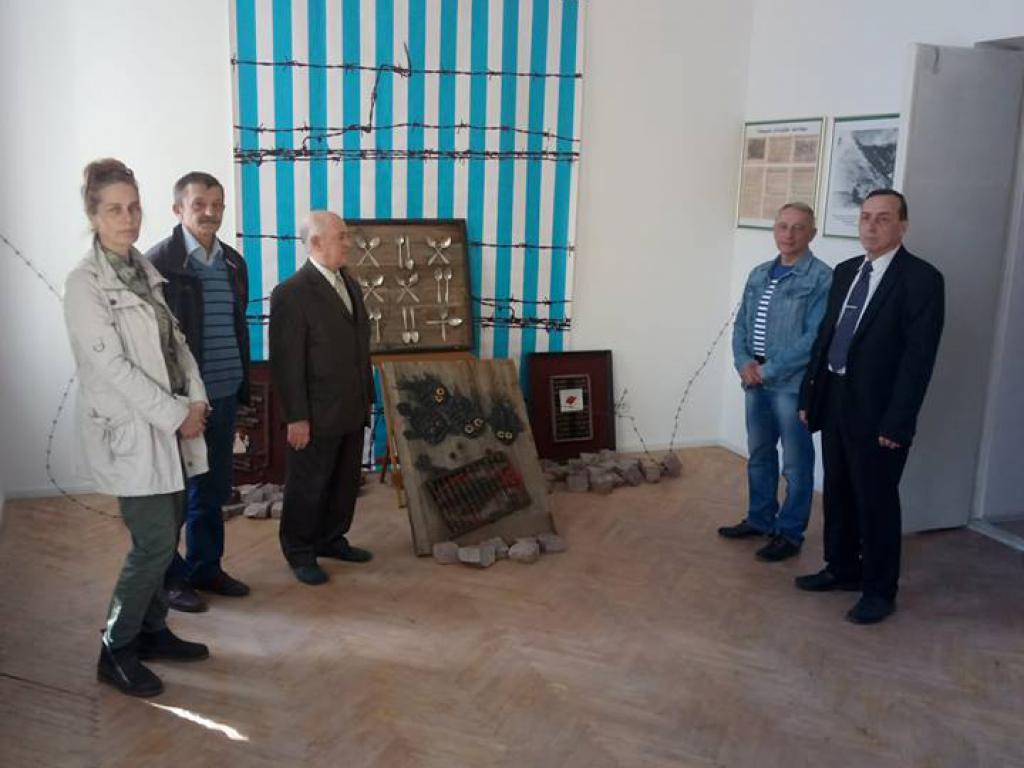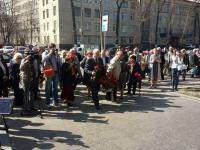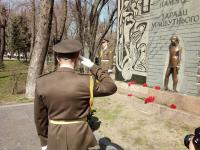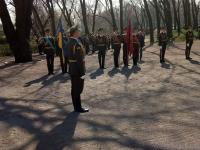International Day of the liberation of Nazi concentration camps. Apr 11, 2018 On April 11, the International Day of the liberation of Nazi concentration camps, an exhibition "Bow the memory of victims" in the exhibition hall of the National Historical and Memorial Reserve "Babyn Yar" (Kyiv, Melnikova St, 44) was opened on the International Day for the Liberation of Prisoners of Nazi Concentration Camps.
Annually, on April 11, the world celebrates the International Day for the Liberation of Prisoners of Nazi Concentration Camps. It was on this day in 1945 that the prisoners of Buchenwald raised an uprising against the Nazis, won their freedom and got a chance to live. Concentration camps have been widespread in Nazi Germany. They contained, as a rule, anti-fascists, social democrats, trade unionists, as well as individuals who were persecuted for racial, religious, social, and other motives. The first concentration camp in Germany was set up near Dachau in March 1933. Before the Second World War, 300,000 German, Austrian and Czech anti-fascists were in prisons and concentration camps in Germany. In subsequent years, Nazi Germany, in the territory of occupied European countries, created a giant network of concentration camps, transformed into places of an organized systematic murder of millions of people. The centralized system of fascist concentration camps was intended for the physical destruction of entire peoples, primarily Slavic; total extermination of Jews, Gypsies; the merciless exploitation of prisoners as a workforce. Concentration camps were equipped with gas-vans, gas cameras, crematoria and other means of mass extermination of people. Death camps were created, where the elimination of prisoners was a continuous and accelerated pace, where prisoners had been living no more than three to six months. Concentration camp Buchenwald was built near Weimar town and began functioning on July 19, 1937. Over 8 years, about 239,000 were prisoners of Buchenwald. At first, they were German political prisoners, later, during the Second World War, representatives of many other nationalities. Many prisoners died already during the construction of the camp, which was conducted without the use of machinery. The prisoners were also exploited by owners of large industrial firms, whose businesses were located in the Buchenwald area (Siemens, Junkers, etc.). In total, 56 thousand prisoners of 18 nationalities were murdered in Buchenwald. Especially a lot of prisoners died in the Buchenwald Dora branch, where "Fau" rocket systems were manufactured in underground facilities.
The camp was located near Nordhausen in Germany. On April 11, 1945, Buchenwald prisoners, after learning about the approach of the Allied forces, successfully carried out an armed uprising, disarmed and captured more than 800 SS-men and security guards, took over the leadership of the camp. Only two days later, the US troops came to the camp. Having carried out the uprising, the Buchenwald prisoners rescued themselves from destruction, as on the eve the Nazi authorities issued an order on the extermination of all prisoners. Except for Buchenwald and Dora, there were other concentration camps: Auschwitz, Majdanek, Mauthausen, Stuttgof, Sachsenhausen, Treblinka. Of the 18 million people in Europe who passed through concentration camps, more than 11 million people were killed. The system of concentration camps in Germany was liquidated along with the defeat of Hitlerism and sentenced by the International Military Tribunal in Nuremberg. The International Day for the Liberation of Prisoners of Nazi Concentrators throughout the world is celebrated with memorable events, meetings of former prisoners of fascism, the commemoration of the dead, honor of their memory, laying flowers to the graves and places of burial of the victims of fascism.





















